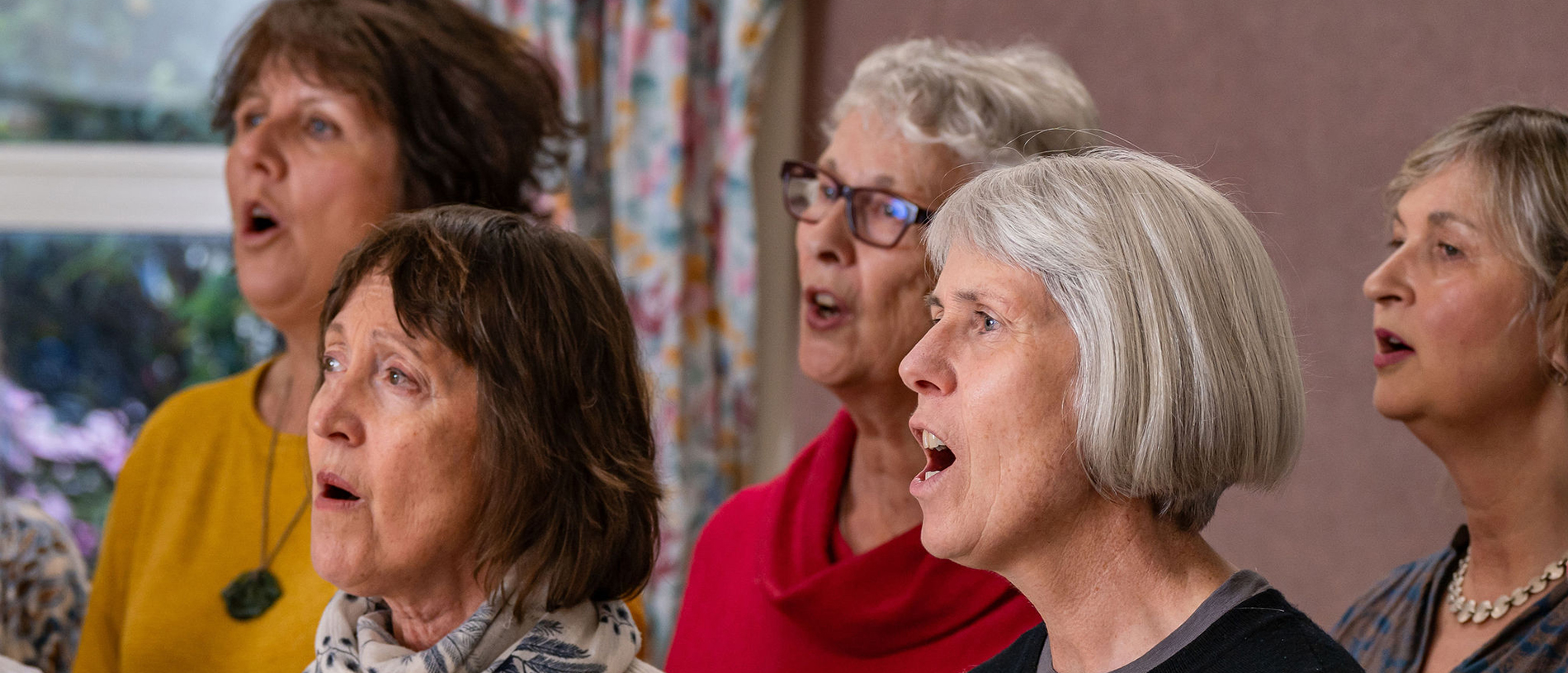
Finding a hobby: Choir
I blame it on my older sister. A musically adept sort, she’d demand that I sing with her when we were young so that she could practice harmonizing.
From the Greek words kallos, meaning beauty, and graphein, to write – calligraphy is thought to have originated in Rome around 600BC with the advent of the Latin alphabet. Celtic monks used it to create the Book of Kells, a treasured handwritten bible; it also has strong ties to Chinese and Arabic cultures.
Here I am in 2024, sitting with Emma Pearce-Hagen of Inkberry Calligraphy inside her Auckland studio, thousands of years on from when it all began and in a digitalised world. I’m trying my hand at the ancient art that translates to ‘beautiful writing’.
“I love how calligraphy is a connection to body and mind,” Emma says. “It’s a calming and relaxing hobby, but also has practical benefits because when you produce something it’s very satisfying. It’s like mastering an old-fashioned tool.”

We begin our lesson with an introduction to the anatomy of a nib: the body, vent hole and tines. The two miniscule prongs forming the very tip of the pen separate at the gentlest of pressure, altering the thickness of letters through ink flow.
Watching Emma write is mesmerising. Her strokes are effortless, butter smooth. It’s a skill 35 years in the making.
What started as a hobby while pregnant with her daughter is now Emma’s bread and butter, with the launch of her business almost eight years ago. After completing a course in traditional calligraphy, the English language teacher, with a great love of words practices her lettering at any opportunity, including on shopping lists.
Nowadays, Emma’s calligraphy and illustration skills are enlisted by a diverse clientele: her bespoke stationery is sought after by couples around the world for her beautifully handwritten envelopes, invitations, name tags and table settings, which become treasured wedding keepsakes. Businesses and brands pursue her for personalised products, and her Beginners Calligraphy workshops and lessons attract people like me, keen to learn a new skill. In today’s digital word, Emma’s lessons also cater to school children whose worried parents fear they may never learn handwriting in the modern school environment.

My gaze lowers to the stroke sheet Emma has supplied. As opposed to cursive writing, which is continuous lettering, calligraphy is stroke-based: “we do a stroke and then it’s pen off,” Emma says.
“The lovely thing about calligraphy is that once you’ve built up some foundation strokes, you can put a lot of letters together.” Emma explains an example: When I put a ‘C’ and a ‘J’ together, I get a ‘G’. We’re trying to achieve the same shapes and angles so that they look beautiful together.”
A lot of modern calligraphy materials – like the sumi ink and the nib of the dip pen I’m using – comes from Japan, used for its famous ‘manga’ which refer to all kinds of cartooning, comics, and animation. The ink is black and luscious and dries with a little gloss.

“I like modern calligraphy because there are no rules,” Emma says.
“When I was learning, it was very prescriptive. But now, it’s freer. You can bring your own style; you might be small and delicate or have bigger strokes. I’m a big flourisher! I like to add what I call ‘a little bit of Beyonce’; a little bit of flavour and flair,” she says.
Even though the ‘rules’ are more relaxed with modern calligraphy, there’s still a science to it and I’m taking it all in, writing within the gridline and holding my pen at a 45-degree angle, I move just my fingers as I write, not my wrist. There are underturn and overturn strokes used for linking, ascender and descender letters that go above and below the gridline, some letters begin at the ten o’clock mark while others at two o’clock depending on the ink flow required to make beautiful and consistent lettering.

“You have a busy job, huh? I can tell,” Emma says as I begin to form the letters of my name with the ink, midnight black stark against white paper. “Just breathe, slow down and keep calm.”
I am a writer; it’s what I do for a living. Usually I’m forging words by tapping on my phone or laptop, or hurriedly scribbling in my notepad. Here, I’m slowing down. I’m present.
Is the art of lettering under threat? Emma is confident in her answer. “People want sentiment as a keepsake and an artwork, like handwritten wedding readings that are later framed,” she says. “Some people have never seen their name written like that on a place card, so they find joy in taking theirs home and keeping it. It’s a warmth and a connection. It beats a Facebook group invite to your wedding any day!”
Story by Monica Tischler for the Summer 2024 issue of AA Directions Magazine. Monica Tischler is the Deputy Editor of AA Directions Magazine.